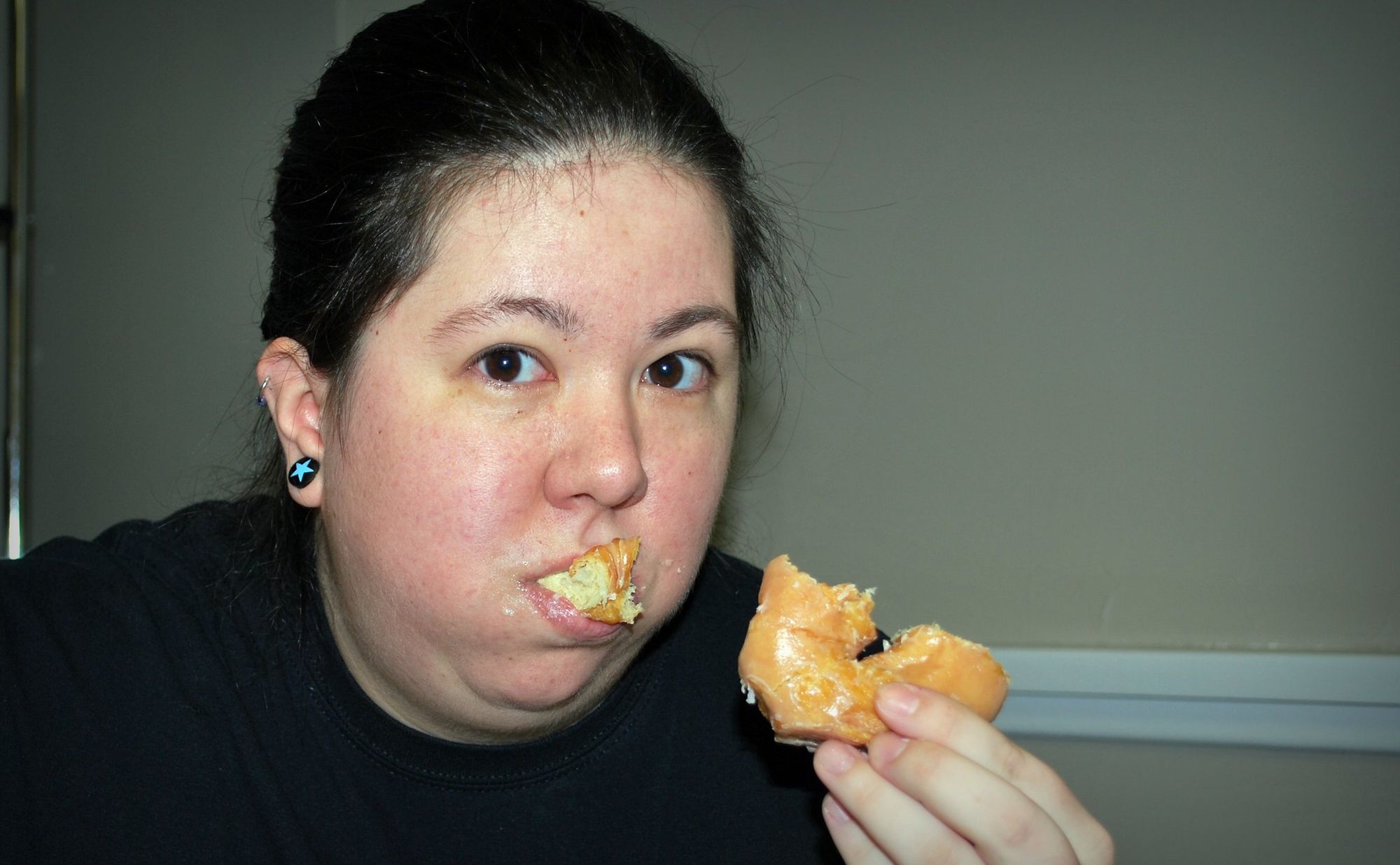
By Alon Coret
identifying person; perhaps in her teens or 20s; probably Caucasian; an urbanite; middle- or upper-middle class; anxious; perfectionistic; severely restricting food intake to the point of starvation; exercising intensely; and possibly using purging techniques (e.g., self-induced vomiting) to achieve an unhealthy weight.
You’re not entirely wrong. Many of us were taught this stereotypical image from our social media, TV shows, magazines (does anyone still read actual printed magazines?), and perhaps inadvertently even within our own health professional education programs. And it is true that some eating disorders, especially anorexia nervosa and bulimia nervosa, may present like this. But there is growing recognition that eating disorders disproportionately affect certain populations (e.g., LGBTQ+ youth) and are likely under-reported in others (e.g., male-identifying persons).
And now what if I asked you this: What images come to your mind when you hear “binge eating disorder?” Have you ever met someone with this illness? Have you ever treated someone with binge eating disorder (BED)? Have you ever wondered whether you yourself may be struggling (or may have at one point struggled) with BED?
To give context, binge eating patterns have been described in medical literature as early as the 1950s, though BED became a formal, standalone diagnosis only in the fifth edition of the Diagnostic and Statistical Manual of Mental Disorders (DSM-5), published in 2013.
BED is characterized by three key features:
- Recurrent episodes of binge eating. These are defined as eating – within a discrete period of time – an amount of food that is “definitely larger” than what most people would eat in a similar period of time under similar circumstances, and a sense of lack of control over eating during these episodes.
- Three or more associated features: eating much more rapidly than normal; eating until feeling uncomfortably full; eating large amounts of food when not feeling physically hungry; eating alone because of feeling embarrassed by how much one is eating; and/or feeling disgusted with oneself, depressed or very guilty afterward.
- The presence of marked distress regarding binge eating.
The DSM-5 adds additional criteria, spelling out the minimum frequency and duration of symptoms needed for diagnosing BED (average of at least weekly binges for at least three months), as well as specifiers of severity depending on the number of weekly binge episodes. Finally, the DSM-5 stipulates that BED is not associated with any “compensatory behaviours” (e.g., self-induced vomiting) that may be seen in patients living with anorexia or bulimia nervosa.

Epidemiologic research suggests that BED is at least as common – though probably more common – than any other eating disorder, both in adult and adolescent populations (estimated point prevalence of 1.2 per cent and 1.32 per cent, respectively), and often goes under-reported and under-recognized.
So, why does this matter?
Binge eating, emotional eating or full-blown BED meeting DSM-5 criteria often come from a place of deep psychological pain and distress.
Research around adverse childhood experiences (ACEs) has shown a strong association between ACEs and the development of various physical and psychological illnesses in later life – perhaps best demonstrated by the landmark 1998 study by Vincent Fellitti and colleagues. BED – along with other eating disorders – is strongly related to ACEs, with one recent study identifying a dose-response relationship between childhood exposure to household violence, household criminality or growing up with a parent with mental illness, and an increased risk of developing BED. Other studies have linked both childhood food neglect (i.e., restricting a child’s access to food) and food insecurity (i.e., inadequate access to food) to risk of future BED. One study even found a connection between parental experiences of trauma – specifically, physical abuse in mothers and emotional abuse in fathers – and future risk of BED in their children, highlighting a multigenerational effect of trauma on health.
Other stressors include past-year experiences of emotional, physical and sexual abuse (as shown in a study of U.S. college students), being a war veteran or being subjected to weight-based teasing and body dissatisfaction. That the LGBTQ+ community is at greater risk of developing eating disorders has been attributed to various factors including minority stress and gender dysphoria.
The other important piece to highlight is that BED is associated with numerous medical and psychiatric comorbidities.
In the absence of compensatory behaviours (e.g., as would be seen in bulimia nervosa), BED predisposes individuals to weight gain and obesity and, in turn, various negative health outcomes (e.g., cardiovascular disease, Type 2 diabetes mellitus, liver disease, kidney disease and sleep apnea, to name some) and a worse quality of life. On a societal level, obesity is also linked with higher economic costs.
First published in Healthy Debate. You can read the original article here.
Alon Coret
Alon Coret is a subspecialty resident in Adolescent Medicine at McGill University in Montreal. He is passionate about helping youth live safer and healthier lives.
If you liked what you just read and want more of Our Brew, subscribe to get notified. Just enter your email below.


Related Posts
Pope Leo Xiv is the First Member of the Order of St. Augustine to Be Elected Pope – but Who Are the Augustinians?
Jun 04, 2025
People Say They Prefer Stories Written by Humans Over AI-generated Works, Yet New Study Suggests That’s Not Quite True
Apr 02, 2025
What are AI Hallucinations? Why AIs Sometimes Make Things Up
Mar 25, 2025